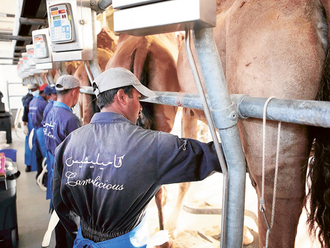Lying is a bad thing — this is what mentors, parents and teachers tell us. But there is no society without lies.”
So says theoretical physicist Rafael Barrio. And when he and his colleague Kimmo Kaski from the Aalto University School of Science in Finland thought about this blatant discrepancy, the two computational scientists set out to simulate the effects of lying in a virtual human population. Their results, published in the Proceedings of the Royal Society B, show that lying is essential for the growth of a cohesive social network.
The key to understanding the discrepancy is realising that all lies are not equal. “White lies” or fibs, are generally accepted. Their intention is to protect, benefit or help others, like reassuring children on their efforts to play violin to motivate future improvement.
But some lies are selfish, such as when protecting oneself at the expense of another person or even lying to hurt someone else intentionally. Those kinds of lies are condemned in most societies. In social psychology this behaviour is characterised as “antisocial” lying, while fibs are referred to as “prosocial”, as they help to keep relations in good condition.
Between two people, this classification is intuitive. But how does a whole population react to different types of lies? This is the question Barrio and his team wanted to answer. They created a simple virtual scenario, which could then be used to build computer models.
In their scenario, 200 virtual individuals were connected by relationships of different strengths and each was assigned a random opinion on a hypothetical topic.
Their one-on-one interactions made their levels of trust weaker or stronger, depending on the type of lies these individuals used and that changed the network of the society bit by bit. Some individuals were prosocial liars whose actions had a higher probability of increasing trust, whereas some were antisocial liars whose actions had a higher probability of decreasing trust.
The researchers ran the model repeatedly for about 200,000 interactions within the population and recorded how the group structure evolved. Barrio noted that “200,000 interactions is not much. In the real world, this is something that happens between people in three to four days, the sort of thing when there is some bit of news and everyone forms an opinion about it.”
Not surprisingly, in a population where everyone is perfectly honest, trust increases over time resulting in a well-connected group. But when Barrio decreased the level of honesty in the population by introducing either prosocial or antisocial liars, he observed a different change.
Antisocial deception led to fragmentation of the network, forming small and tightly connected groups of honest individuals who were weakly connected by dishonest agents.
In an extreme case, when all agents in the model succumbed to antisocial lying it destroyed the network structure and led to complete isolation.
The effect of fibs, or prosocial lies, did not destroy the fabric of the virtual society. Instead, the network split up into two large communities with strong social links of like-minded honest agents within the community and weak connections between the two big groups. These weak links were almost exclusively established by dishonest agents, which suggests that prosocial lying might actually enhance the cohesiveness in a society.
In the model, the level of honesty and type of lying is fixed for each individual, but opinions may change. At the start of each simulation, when agents were randomly assigned opinions, some were undecided. Barrio and his team observed that introducing more fibbing in the network reduced the number of undecided agents and concluded prosocial lying actually helps people make up their minds.
Alistair Sutcliffe, an expert in systems engineering at the University of Manchester, said: “The novelty in this study is the differentiation between social and antisocial lying. In reality the tolerance to fibbing depends on the strength of the relationship.”
But it doesn’t always take a computer model to work out whether lying is good or bad. Charles Darwin understood the nature of lies almost 200 years ago. He looked at his own son and concluded: “He is a liar but a good chap.”
–Washington Post











